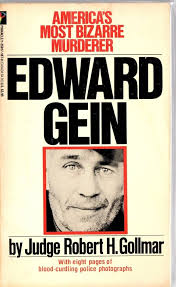
Introduction
Ed Gein, an American criminal whose heinous acts in the 1950s permeated popular culture, serves as a crucial study in the psychology of murders and the fascination surrounding true crime. His life and crimes have inspired numerous films and literary works, establishing him as a fixture in the annals of criminal history.
The Early Life of Ed Gein
Born on August 27, 1906, in La Crosse, Wisconsin, Edward Theodore Gein was raised by a domineering mother, Augusta, who instilled in him a deep-seated belief that boys and girls were inherently sinful. Gein’s troubled childhood was marked by emotional isolation and his mother’s strict Victorian ideals, which would later manifest in his gruesome adult behaviours.
Uncovering the Crimes
Gein’s criminal activities came to light after he was arrested in 1957 for the disappearance of a local woman, Bernice Worden. When investigators searched his home, they uncovered a nightmare scenario. The police discovered body parts, furniture made of human remains, and various other macabre items fashioned from flesh and bones. It was later revealed that Gein had exhumed corpses from local graveyards, driven by a desire to create a ‘woman suit’ that he intended to wear to feel like his deceased mother.
Impact on Popular Culture
The shockwaves of Gein’s actions extended far beyond the courts. His life story inspired several notable fictional characters in film and literature, including Norman Bates in Alfred Hitchcock’s “Psycho,” Leatherface from “The Texas Chainsaw Massacre,” and Buffalo Bill from “The Silence of the Lambs.” These portrayals emphasise the enduring impact of Gein’s life on horror and psychological thriller genres, shaping societal perceptions of serial killers as complex figures driven by deep psychological troubles.
Conclusion
Ed Gein’s horrifying legacy remains a subject of fascination and repulsion within society. His story is a grim reminder of the darkness that can reside within the human psyche, raising ongoing questions about mental health, societal neglect, and the nature of evil. As we continue to explore these tales, it is essential to approach them with a critical mind, understanding both the psychological factors at play and the wider implications for how we portray and perceive crime in our culture.
You may also like

Exploring the Charm and Development of Romford

Exploring Bromley: A Vibrant Borough on the Rise
